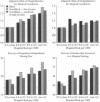Abstract
OBJECTIVE: To explore whether geographic variations in Medicare hospital utilization rates are due to differences in local hospital capacity, after controlling for socioeconomic status and disease burden, and to determine whether greater hospital capacity is associated with lower Medicare mortality rates. DATA SOURCES/STUDY SETTING: The study population: a 20 percent sample of 1989 Medicare enrollees. Measures of resources were based on a national small area analysis of 313 Hospital Referral Regions (HRR). Demographic and socioeconomic data were obtained from the 1990 U.S. Census. Measures of local disease burden were developed using Medicare claims files. STUDY DESIGN: The study was a cross-sectional analysis of the relationship between per capita measures of hospital resources in each region and hospital utilization and mortality rates among Medicare enrollees. Regression techniques were used to control for differences in sociodemographic characteristics and disease burden across areas. DATA COLLECTION/EXTRACTION METHODS: Data on the study population were obtained from Medicare enrollment (Denominator File) and hospital claims files (MedPAR) and U.S. Census files. PRINCIPAL FINDINGS: The per capita supply of hospital beds varied by more than twofold across U.S. regions. Residents of areas with more beds were up to 30 percent more likely to be hospitalized, controlling for ecologic measures of socioeconomic characteristics and disease burden. A greater proportion of the population was hospitalized at least once during the year in areas with more beds; death was also more likely to take place in an inpatient setting. All effects were consistent across racial and income groups. Residence in areas with greater levels of hospital resources was not associated with a decreased risk of death. CONCLUSIONS: Residence in areas of greater hospital capacity is associated with substantially increased use of the hospital, even after controlling for socioeconomic characteristics and illness burden. This increased use provides no detectable mortality benefit.
Full text
PDF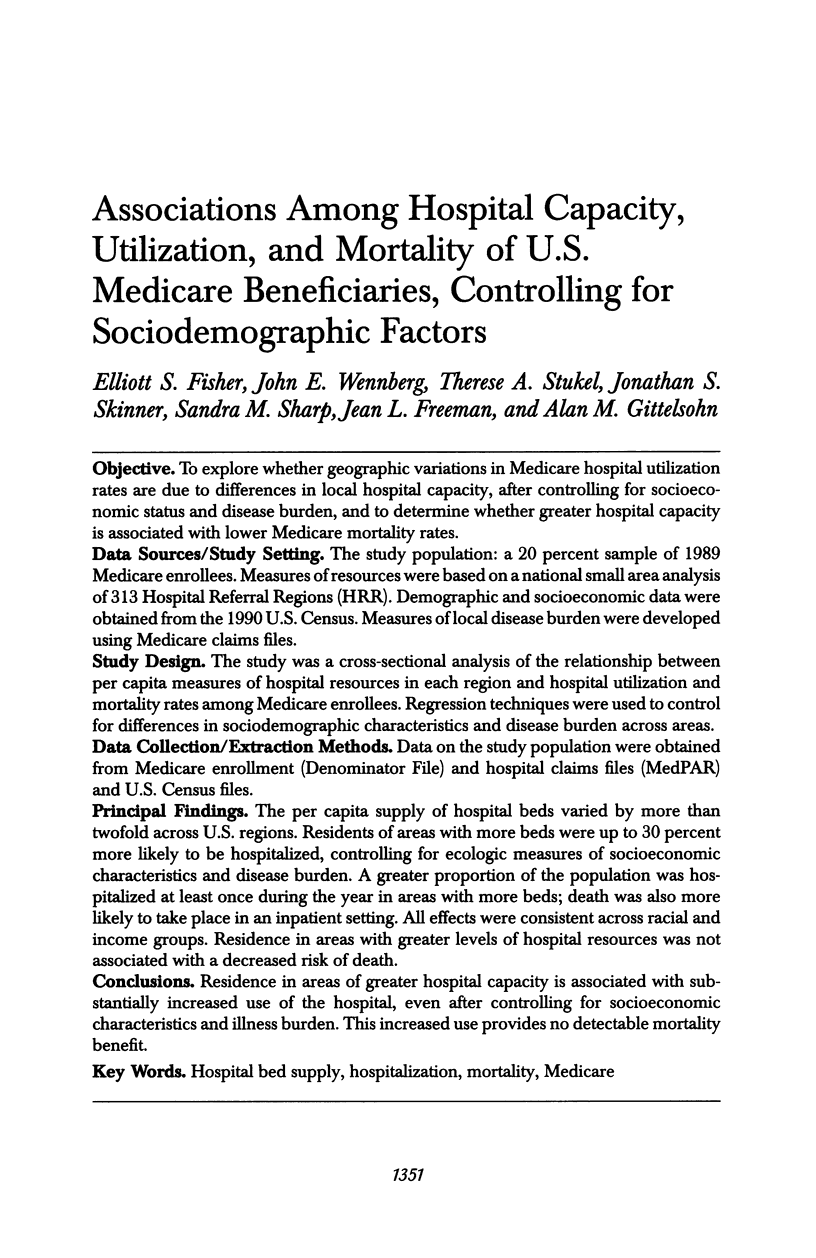
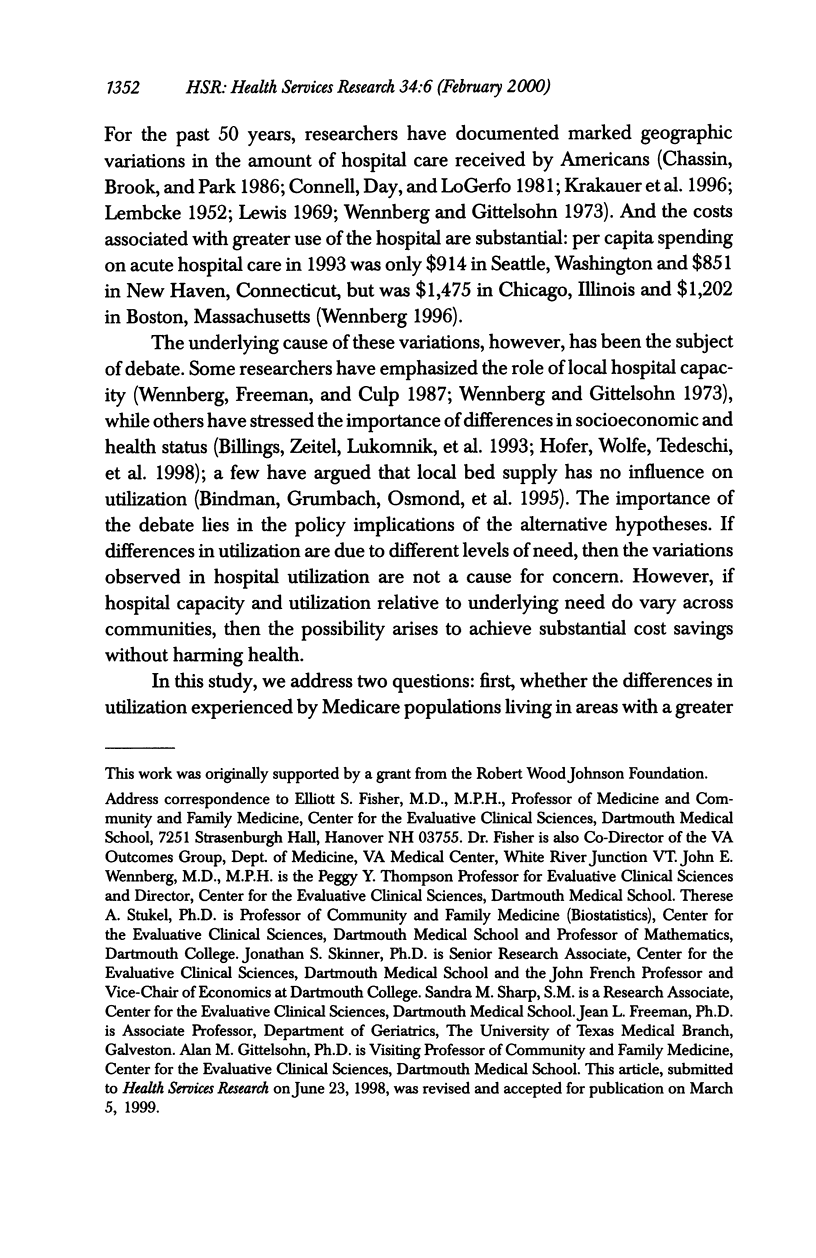
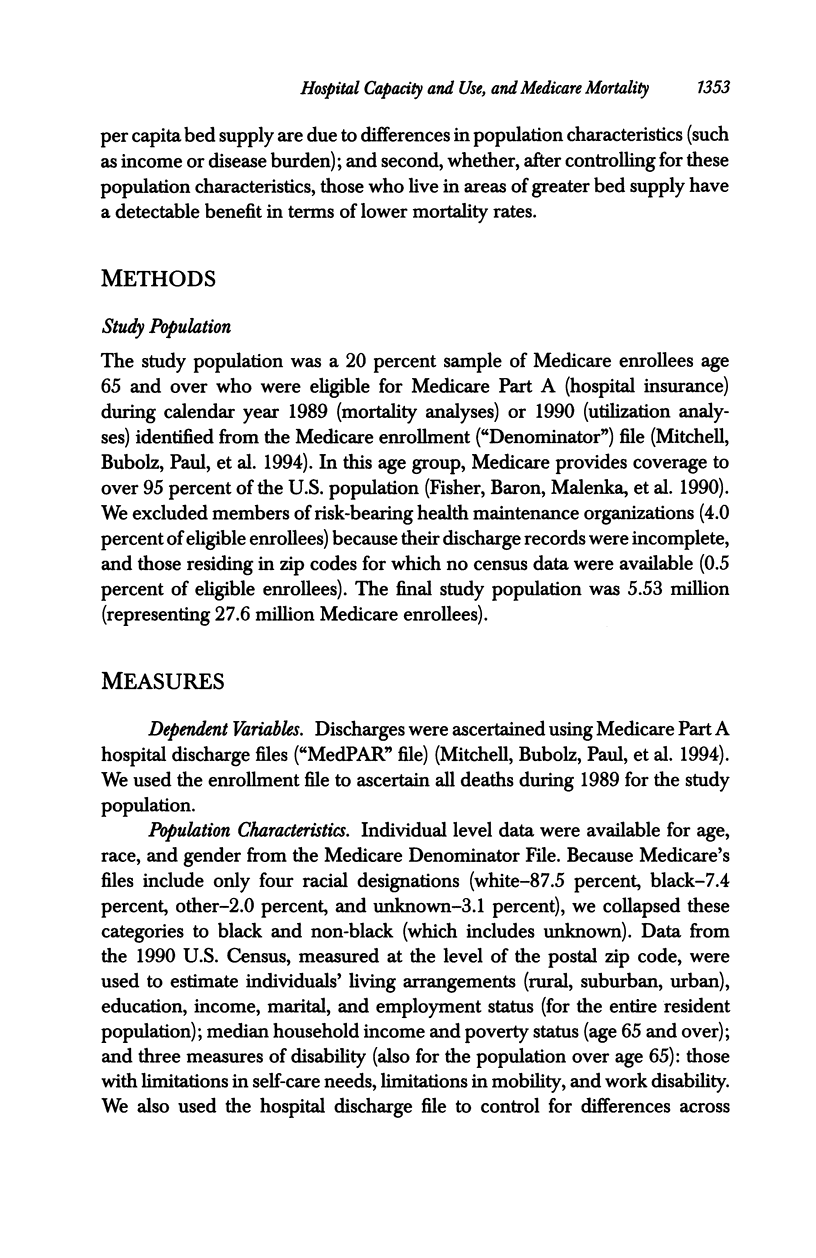
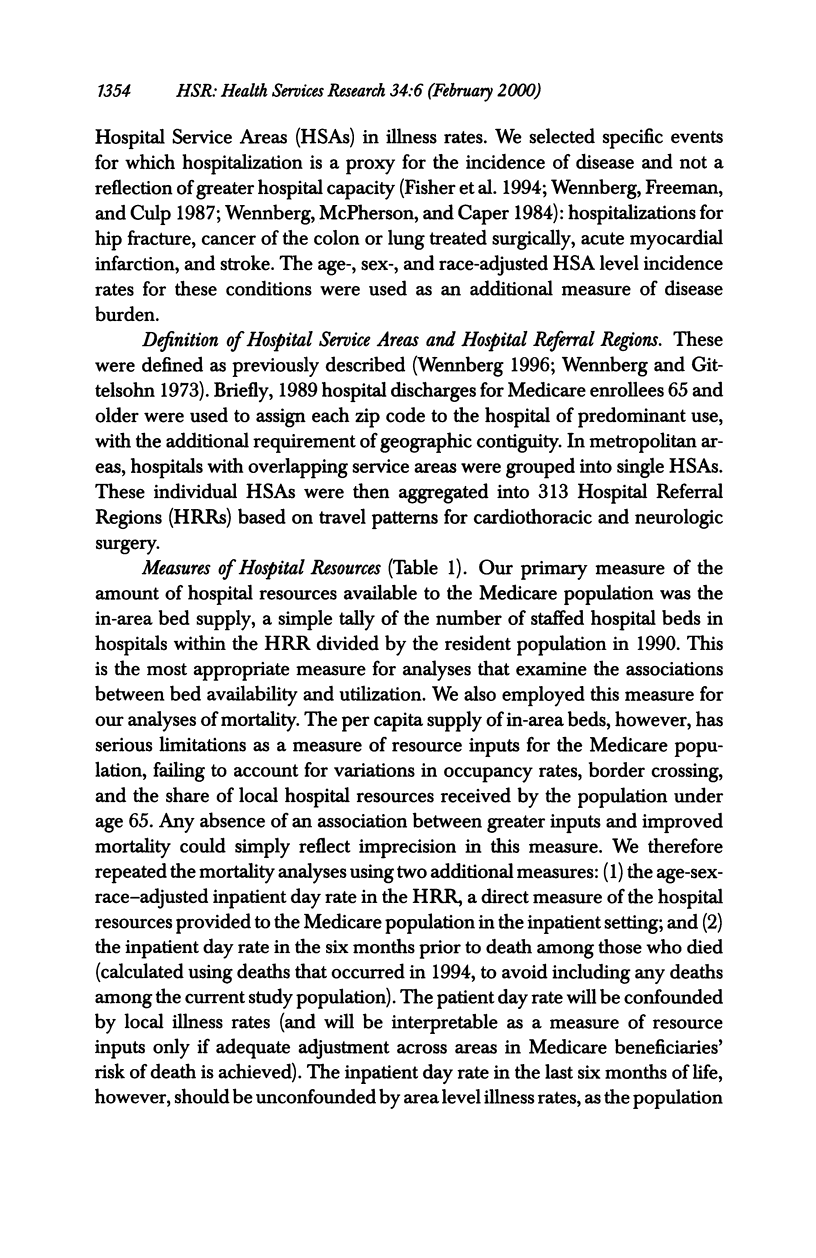

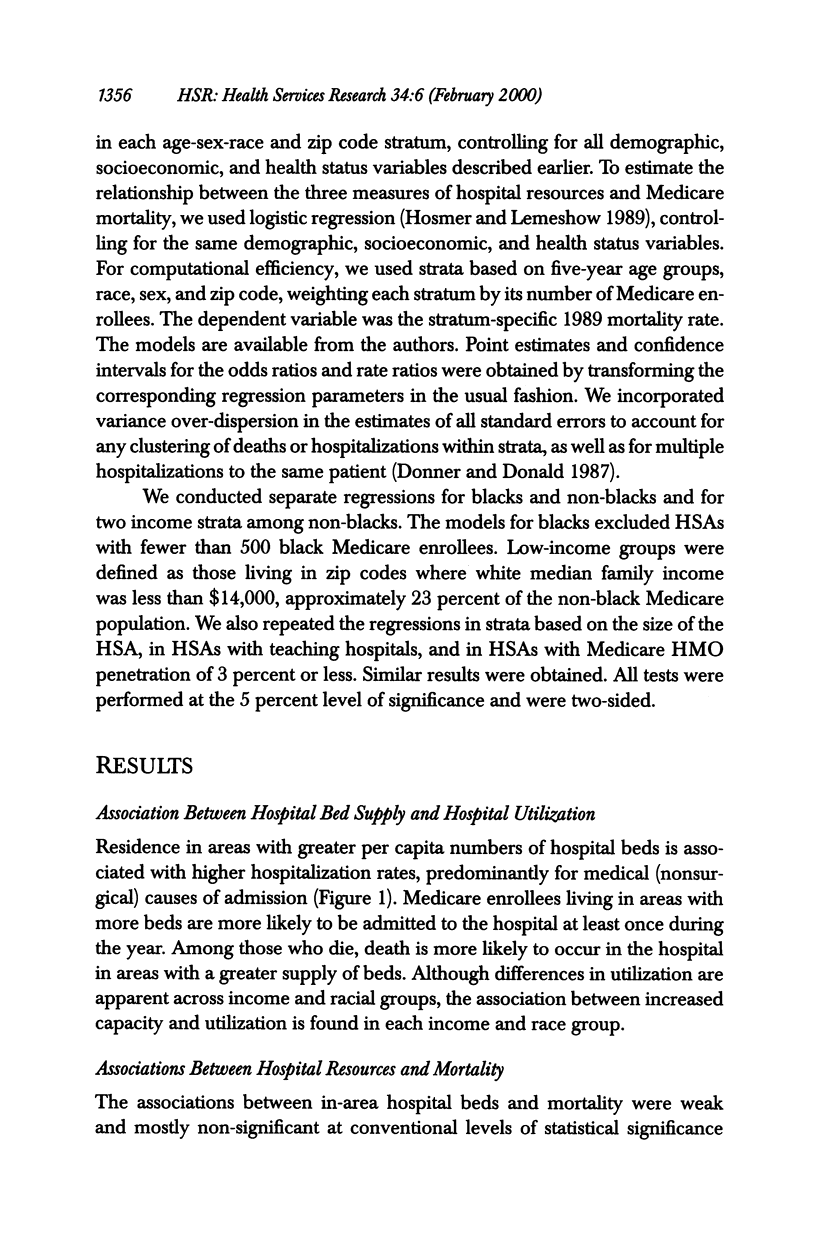

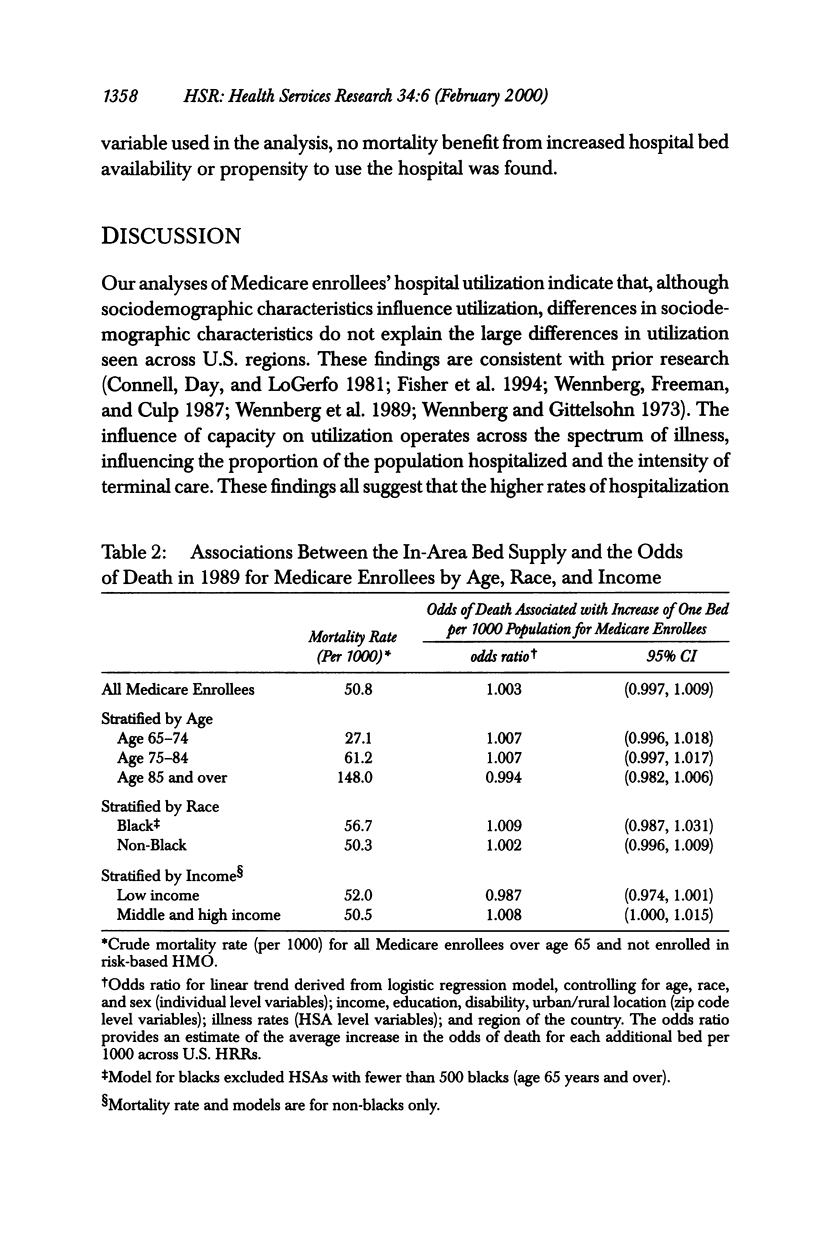
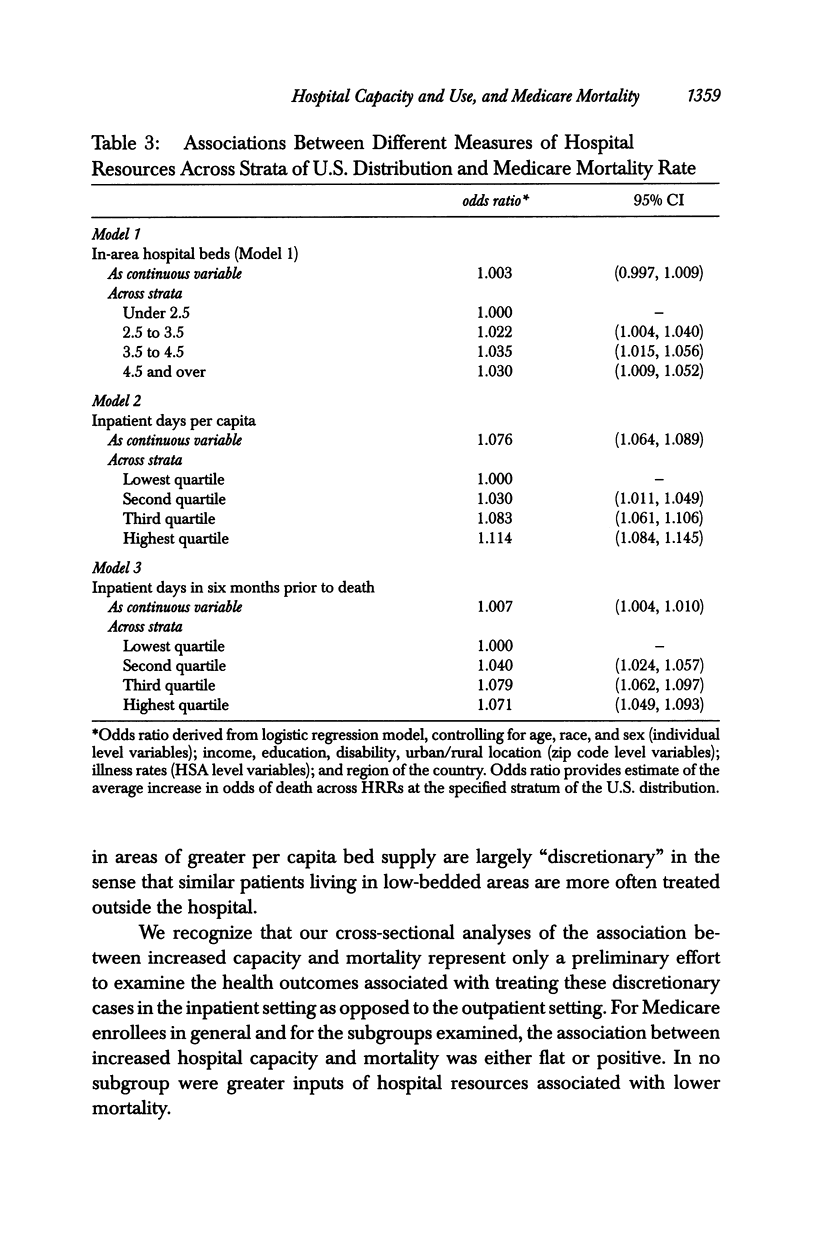
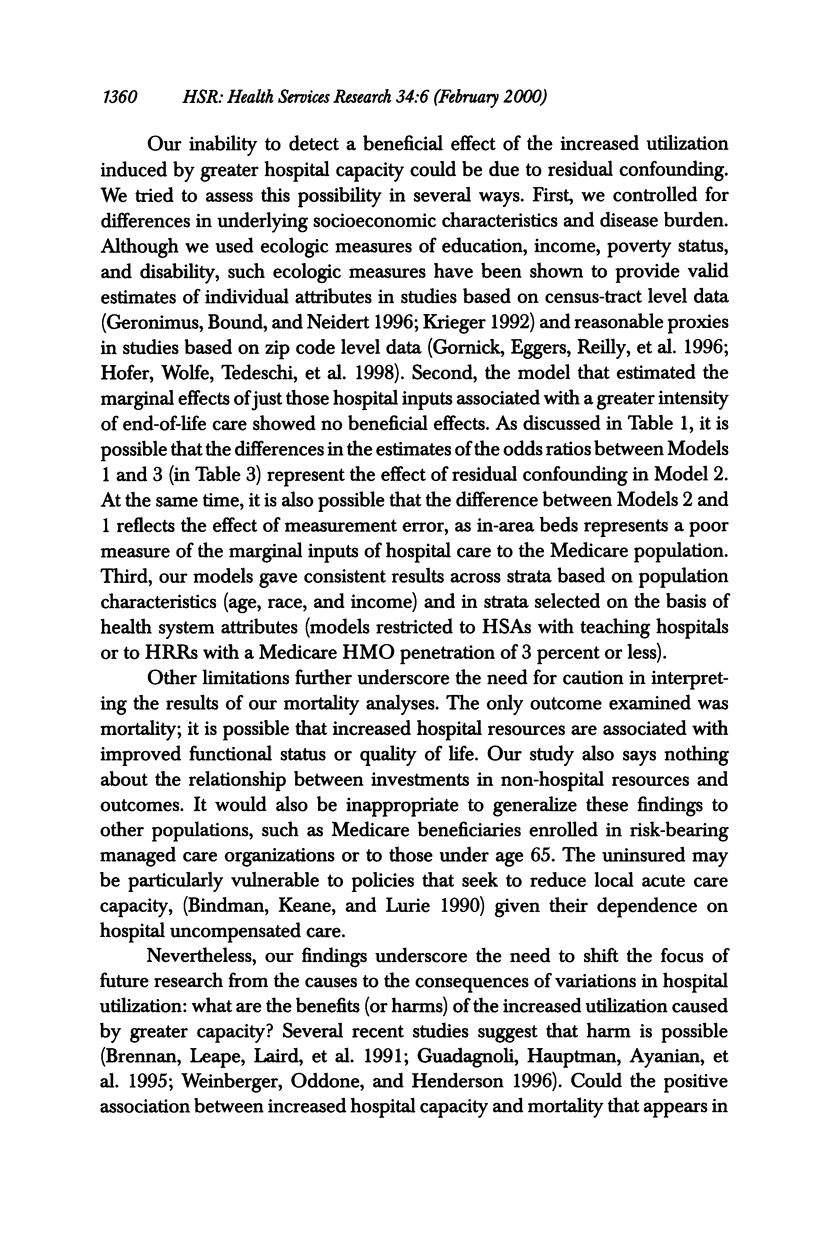


Images in this article
Selected References
These references are in PubMed. This may not be the complete list of references from this article.
- Billings J., Zeitel L., Lukomnik J., Carey T. S., Blank A. E., Newman L. Impact of socioeconomic status on hospital use in New York City. Health Aff (Millwood) 1993 Spring;12(1):162–173. doi: 10.1377/hlthaff.12.1.162. [DOI] [PubMed] [Google Scholar]
- Bindman A. B., Grumbach K., Osmond D., Komaromy M., Vranizan K., Lurie N., Billings J., Stewart A. Preventable hospitalizations and access to health care. JAMA. 1995 Jul 26;274(4):305–311. [PubMed] [Google Scholar]
- Bindman A. B., Keane D., Lurie N. A public hospital closes. Impact on patients' access to care and health status. JAMA. 1990 Dec 12;264(22):2899–2904. doi: 10.1001/jama.264.22.2899. [DOI] [PubMed] [Google Scholar]
- Brennan T. A., Leape L. L., Laird N. M., Hebert L., Localio A. R., Lawthers A. G., Newhouse J. P., Weiler P. C., Hiatt H. H. Incidence of adverse events and negligence in hospitalized patients. Results of the Harvard Medical Practice Study I. N Engl J Med. 1991 Feb 7;324(6):370–376. doi: 10.1056/NEJM199102073240604. [DOI] [PubMed] [Google Scholar]
- Chassin M. R., Brook R. H., Park R. E., Keesey J., Fink A., Kosecoff J., Kahn K., Merrick N., Solomon D. H. Variations in the use of medical and surgical services by the Medicare population. N Engl J Med. 1986 Jan 30;314(5):285–290. doi: 10.1056/NEJM198601303140505. [DOI] [PubMed] [Google Scholar]
- Connell F. A., Day R. W., LoGerfo J. P. Hospitalization of medicaid children: analysis of small area variations in admission rates. Am J Public Health. 1981 Jun;71(6):606–613. doi: 10.2105/ajph.71.6.606. [DOI] [PMC free article] [PubMed] [Google Scholar]
- Donner A., Donald A. Analysis of data arising from a stratified design with the cluster as unit of randomization. Stat Med. 1987 Jan-Feb;6(1):43–52. doi: 10.1002/sim.4780060106. [DOI] [PubMed] [Google Scholar]
- Fisher E. S., Baron J. A., Malenka D. J., Barrett J., Bubolz T. A. Overcoming potential pitfalls in the use of Medicare data for epidemiologic research. Am J Public Health. 1990 Dec;80(12):1487–1490. doi: 10.2105/ajph.80.12.1487. [DOI] [PMC free article] [PubMed] [Google Scholar]
- Fisher E. S., Wennberg J. E., Stukel T. A., Sharp S. M. Hospital readmission rates for cohorts of Medicare beneficiaries in Boston and New Haven. N Engl J Med. 1994 Oct 13;331(15):989–995. doi: 10.1056/NEJM199410133311506. [DOI] [PubMed] [Google Scholar]
- Gornick M. E., Eggers P. W., Reilly T. W., Mentnech R. M., Fitterman L. K., Kucken L. E., Vladeck B. C. Effects of race and income on mortality and use of services among Medicare beneficiaries. N Engl J Med. 1996 Sep 12;335(11):791–799. doi: 10.1056/NEJM199609123351106. [DOI] [PubMed] [Google Scholar]
- Guadagnoli E., Hauptman P. J., Ayanian J. Z., Pashos C. L., McNeil B. J., Cleary P. D. Variation in the use of cardiac procedures after acute myocardial infarction. N Engl J Med. 1995 Aug 31;333(9):573–578. doi: 10.1056/NEJM199508313330908. [DOI] [PubMed] [Google Scholar]
- Hofer T. P., Wolfe R. A., Tedeschi P. J., McMahon L. F., Griffith J. R. Use of community versus individual socioeconomic data in predicting variation in hospital use. Health Serv Res. 1998 Jun;33(2 Pt 1):243–259. [PMC free article] [PubMed] [Google Scholar]
- Krakauer H., Jacoby I., Millman M., Lukomnik J. E. Physician impact on hospital admission and on mortality rates in the Medicare population. Health Serv Res. 1996 Jun;31(2):191–211. [PMC free article] [PubMed] [Google Scholar]
- Krieger N. Overcoming the absence of socioeconomic data in medical records: validation and application of a census-based methodology. Am J Public Health. 1992 May;82(5):703–710. doi: 10.2105/ajph.82.5.703. [DOI] [PMC free article] [PubMed] [Google Scholar]
- Lewis C. E. Variations in the incidence of surgery. N Engl J Med. 1969 Oct 16;281(16):880–884. doi: 10.1056/NEJM196910162811606. [DOI] [PubMed] [Google Scholar]
- Weinberger M., Oddone E. Z., Henderson W. G. Does increased access to primary care reduce hospital readmissions? Veterans Affairs Cooperative Study Group on Primary Care and Hospital Readmission. N Engl J Med. 1996 May 30;334(22):1441–1447. doi: 10.1056/NEJM199605303342206. [DOI] [PubMed] [Google Scholar]
- Wennberg J. E., Freeman J. L., Culp W. J. Are hospital services rationed in New Haven or over-utilised in Boston? Lancet. 1987 May 23;1(8543):1185–1189. doi: 10.1016/s0140-6736(87)92152-0. [DOI] [PubMed] [Google Scholar]
- Wennberg J. E., Freeman J. L., Shelton R. M., Bubolz T. A. Hospital use and mortality among Medicare beneficiaries in Boston and New Haven. N Engl J Med. 1989 Oct 26;321(17):1168–1173. doi: 10.1056/NEJM198910263211706. [DOI] [PubMed] [Google Scholar]
- Wennberg J. E., McPherson K., Caper P. Will payment based on diagnosis-related groups control hospital costs? N Engl J Med. 1984 Aug 2;311(5):295–300. doi: 10.1056/NEJM198408023110505. [DOI] [PubMed] [Google Scholar]
- Wennberg J., Gittelsohn Small area variations in health care delivery. Science. 1973 Dec 14;182(4117):1102–1108. doi: 10.1126/science.182.4117.1102. [DOI] [PubMed] [Google Scholar]



